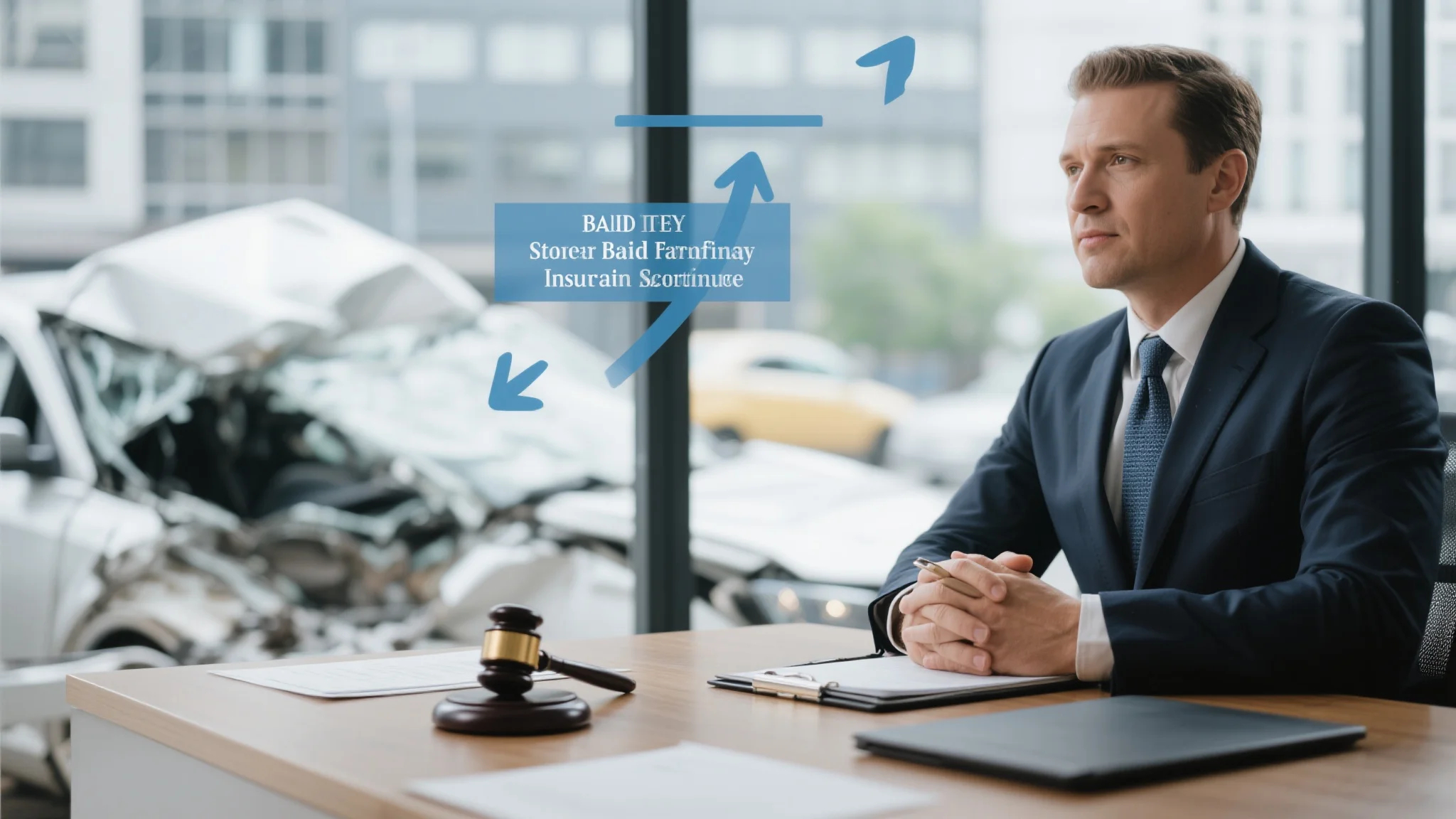Filing a bad faith insurance lawsuit represents one of the most powerful legal remedies available to policyholders who have been wrongfully denied coverage or subjected to unreasonable claim handling practices by their insurance companies. The process requires careful preparation, strategic timing, and comprehensive understanding of both insurance law and civil litigation procedures that vary significantly across different jurisdictions. Insurance companies have sophisticated legal departments and unlimited resources to defend against bad faith claims, making professional legal representation absolutely essential for success. The foundation of any successful bad faith lawsuit begins long before the actual filing, with meticulous documentation of every interaction with the insurance company, preservation of all relevant evidence, and careful analysis of the insurance policy language and applicable state laws. Bad faith insurance law has evolved significantly over the past several decades, with courts increasingly recognizing that insurance companies have special obligations to their policyholders that go beyond simple contract performance. These obligations include the duty to conduct reasonable investigations, the duty to fairly evaluate claims, the duty to communicate clearly and honestly with policyholders, and the duty to place the policyholder’s interests on equal footing with the company’s own interests when making coverage decisions. When insurance companies violate these duties, they expose themselves to liability that can far exceed the original claim amount, including consequential damages, emotional distress damages, punitive damages, and attorney fees. The legal standards for proving bad faith vary by state, with some jurisdictions requiring proof of intentional misconduct while others apply negligence standards or focus on whether the insurance company’s conduct was unreasonable under the circumstances. Understanding these nuances is crucial for developing an effective litigation strategy that maximizes the chances of success while minimizing the time and expense required to achieve favorable results. The decision to pursue bad faith litigation should never be made lightly, as these cases can be complex, expensive, and time-consuming, requiring extensive discovery, expert testimony, and sophisticated legal arguments that challenge well-funded corporate defendants with experienced legal teams.
Building the Foundation: Documentation, Investigation, and Legal Analysis
The success of any bad faith insurance lawsuit depends heavily on the quality and comprehensiveness of the foundation built during the pre-litigation phase, when experienced attorneys work with clients to gather evidence, analyze policy language, and develop legal theories that will support the claim. Working with an insurance bad faith attorney during this critical phase ensures that no important evidence is overlooked and that all potential legal claims are properly preserved and developed. The documentation process begins with a comprehensive review of the entire claim file, including all correspondence between the policyholder and the insurance company, internal insurance company documents obtained through discovery, policy documents and endorsements, claim forms and supporting documentation, investigation reports, expert opinions, and any other materials related to the claim handling process. Experienced bad faith attorneys know how to obtain and analyze insurance company internal documents that often reveal the true reasons for claim denials and the decision-making processes that led to unreasonable claim handling. These internal documents frequently contain smoking gun evidence of bad faith, including emails between adjusters and supervisors discussing strategies to minimize payouts, training materials that encourage aggressive claim denial practices, financial incentives that reward adjusters for denying claims, and communications that reveal the company’s true motivations for denying coverage. The investigation phase involves not only reviewing existing documentation but also conducting independent research and analysis that can uncover additional evidence of bad faith conduct. This might include hiring experts to evaluate the reasonableness of the insurance company’s investigation, obtaining industry standards and best practices that the insurance company failed to follow, researching the company’s claim handling practices in similar cases, and identifying patterns of misconduct that suggest systematic bad faith practices rather than isolated incidents. The legal analysis phase requires careful examination of the applicable state laws governing insurance bad faith, including statutory requirements, common law principles, and regulatory standards that define the insurance company’s obligations to policyholders. Different states have different legal standards for bad faith claims, with some requiring proof of intentional misconduct while others focus on whether the insurance company’s conduct was unreasonable under the circumstances. Some states have specific statutes that create private rights of action for unfair claim practices, while others rely on common law tort principles or breach of contract theories. Understanding these legal nuances is essential for developing a litigation strategy that maximizes the chances of success while complying with all procedural requirements and statutes of limitations.

The policy analysis component of the foundation-building process involves detailed examination of the insurance policy language, endorsements, and exclusions to determine the scope of coverage and identify any ambiguities or inconsistencies that favor the policyholder’s interpretation. Insurance policies are contracts of adhesion that are typically interpreted in favor of the policyholder when language is ambiguous, and experienced bad faith attorneys know how to identify and exploit these ambiguities to strengthen their clients’ positions. The analysis must also consider the reasonable expectations doctrine, which holds that insurance companies cannot deny coverage based on policy language that contradicts the reasonable expectations of ordinary policyholders, even if the language might technically support the denial. The investigation evaluation process involves analyzing whether the insurance company conducted a reasonable investigation before denying the claim, including whether they gathered sufficient evidence, consulted appropriate experts, considered all relevant factors, and reached conclusions that were supported by the evidence. Insurance companies have a duty to conduct thorough and objective investigations, and failures in this area can provide strong evidence of bad faith conduct. The communication analysis examines all interactions between the insurance company and the policyholder to identify instances of misrepresentation, failure to provide required information, unreasonable delays in responding to inquiries, and other communication failures that violate the insurance company’s duties. The timeline development process creates a comprehensive chronology of all events related to the claim, from the initial loss through the final denial and any subsequent appeals, highlighting delays, inconsistencies, and other evidence of unreasonable conduct. This timeline becomes a crucial tool for presenting the case to judges and juries in a clear and compelling manner. The damages analysis involves calculating all losses resulting from the insurance company’s bad faith conduct, including the original claim amount, consequential damages resulting from the wrongful denial, emotional distress damages, lost profits or other economic losses, and punitive damages where appropriate. This analysis must be supported by detailed documentation and expert testimony that can withstand scrutiny during litigation. The expert witness identification process involves finding and retaining qualified experts who can provide opinions on industry standards, the reasonableness of the insurance company’s conduct, the extent of damages, and other technical issues that will be important to the case. These experts must have appropriate credentials, relevant experience, and the ability to communicate complex concepts clearly to judges and juries.
Strategic Litigation Planning and Execution
The decision to file bad faith claim litigation requires careful strategic planning that considers not only the legal merits of the case but also practical factors such as the insurance company’s financial resources, the jurisdiction where the case will be filed, the potential for settlement, and the client’s goals and risk tolerance. Experienced bad faith attorneys understand that successful litigation requires more than just proving that the insurance company acted unreasonably; it requires developing a comprehensive strategy that maximizes leverage, minimizes risks, and creates incentives for favorable settlement while preparing for the possibility of trial. The venue selection process involves analyzing different jurisdictions where the case might be filed, considering factors such as applicable law, jury pool characteristics, judicial attitudes toward insurance companies, procedural rules, and practical considerations such as convenience and cost. Some jurisdictions are known for being more favorable to policyholders in bad faith cases, while others have legal standards or procedural rules that favor insurance companies. The timing strategy considers when to file the lawsuit to maximize its impact and effectiveness, taking into account factors such as statutes of limitations, the insurance company’s financial condition, pending regulatory actions, and other cases involving the same insurance company that might create additional pressure for settlement. The pleading strategy involves crafting complaints that clearly articulate all legal theories supporting the bad faith claim while avoiding unnecessary complexity that might confuse judges or juries. The complaint must include specific factual allegations that support each element of the bad faith claim, identify all applicable legal theories, request appropriate damages and relief, and comply with all procedural requirements of the jurisdiction where the case is filed. The discovery strategy involves developing a comprehensive plan for obtaining all relevant evidence from the insurance company and other sources, including document requests that target specific categories of internal company documents, interrogatories that force the insurance company to take positions on key issues, depositions of key decision-makers and witnesses, and expert discovery that challenges the insurance company’s positions on technical issues. Insurance companies often resist discovery requests aggressively, requiring experienced attorneys who know how to overcome these obstacles and obtain the evidence necessary to prove bad faith conduct.
The motion practice strategy involves identifying opportunities to use pre-trial motions to strengthen the case, narrow the issues, or obtain favorable rulings that increase settlement pressure. This might include motions for summary judgment on liability issues, motions to compel discovery when the insurance company fails to comply with discovery requests, motions in limine to exclude prejudicial evidence, and motions for sanctions when the insurance company engages in discovery abuse. The settlement negotiation strategy requires understanding the insurance company’s likely settlement range and developing tactics that maximize the settlement value while preserving the option to proceed to trial if necessary. This involves analyzing comparable settlements and verdicts, understanding the insurance company’s risk tolerance and financial constraints, identifying key decision-makers within the insurance company, and timing settlement discussions to maximize leverage. The trial preparation strategy involves developing a compelling narrative that explains the insurance company’s bad faith conduct in terms that judges and juries can understand and relate to, preparing witnesses to testify effectively, organizing evidence in a logical and persuasive manner, and anticipating the insurance company’s defenses and counter-arguments. Bad faith trials often involve complex legal and factual issues that require careful presentation to avoid confusing or overwhelming judges and juries. The damages presentation strategy involves developing clear and compelling evidence of all damages resulting from the insurance company’s bad faith conduct, including economic losses, emotional distress, and punitive damages where appropriate. This requires expert testimony, detailed documentation, and persuasive presentation techniques that help judges and juries understand the full impact of the insurance company’s misconduct. The appellate strategy involves preparing for the possibility that either party might appeal adverse rulings, ensuring that the trial record is properly preserved, and identifying potential appellate issues that might affect the outcome of the case. The enforcement strategy involves planning for how to collect any judgment obtained against the insurance company, considering factors such as the company’s assets, regulatory oversight, and potential for bankruptcy or other collection obstacles. Throughout the litigation process, experienced bad faith attorneys maintain detailed records of all activities, expenses, and time spent on the case to support claims for attorney fees and costs, which are often recoverable in successful bad faith cases. The litigation process also requires ongoing communication with clients to keep them informed of developments, manage their expectations, and ensure that their goals and preferences are considered in all strategic decisions. Successful bad faith litigation requires not only legal expertise but also project management skills, financial resources, and the ability to sustain complex litigation against well-funded corporate defendants over extended periods of time.



